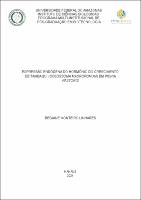| ???jsp.display-item.social.title??? |


|
Please use this identifier to cite or link to this item:
https://tede.ufam.edu.br/handle/tede/8319Full metadata record
| DC Field | Value | Language |
|---|---|---|
| dc.creator | Linhares, Regiane Monteiro | - |
| dc.creator.Lattes | http://lattes.cnpq.br/6167754825212655 | por |
| dc.contributor.advisor1 | Astolfi Filho, Spartaco | - |
| dc.contributor.advisor1Lattes | http://lattes.cnpq.br/2699190136695057 | por |
| dc.contributor.advisor-co1 | Carmo, Edson Júnior do | - |
| dc.contributor.advisor-co1Lattes | http://lattes.cnpq.br/5780309549588357 | por |
| dc.contributor.referee1 | Torres, Fernando Araripe Gonçalves | - |
| dc.contributor.referee1Lattes | http://lattes.cnpq.br/8228010543041248 | por |
| dc.contributor.referee2 | Carvalho, Elen Bethleen de Souza | - |
| dc.contributor.referee2Lattes | http://lattes.cnpq.br/1223389633924270 | por |
| dc.date.issued | 2021-04-22 | - |
| dc.identifier.citation | Linhares, Regiane Monteiro. Expressão endógena do hormônio do crescimento de tambaqui (Colossoma macropomum) em Pichia pastoris. 2021. 76 f. Dissertação (Mestrado em Biotecnologia) - Universidade Federal do Amazonas, Manaus, 2021. | por |
| dc.identifier.uri | https://tede.ufam.edu.br/handle/tede/8319 | - |
| dc.description.resumo | Na região norte, onde há o maior consumo de pescado, o tambaqui (Colossoma macropomum) é o peixe mais consumido. Para possibilitar o aumento da produção do tambaqui, é necessário compreensão sobre a fisiologia, ecologia, dentre outros conhecimentos, para uma otimização e padronização de tecnologias a serem aplicadas na produção desse peixe. Recentemente, o cDNA do hormônio de crescimento de tambaqui foi construído por síntese química e expresso em P. pastoris sob o controle do promotor pAOX1 dessa levedura. Considerando a toxicidade do indutor deste promotor, este trabalho tem como principal objetivo a expressão heteróloga intracelular do hormônio de crescimento de tambaqui (rtGH) na levedura Pichia pastoris, utilizando um promotor constitutivo, o pPGK1. Foram construídos dois vetores para expressão de rtGH, sendo que esses vetores foram linearizados e integrados no genoma de P. pastoris linhagem M12 (auxotrófica para o aminoácido leucina). Os clones transformantes foram selecionados inicialmente no meio seletivo MD seguido de uma segunda seleção por crescimento em meio MD com o antibiótico G418. Para confirmação das colônias transformantes, foi realizado identificação do gene rtGH por meio de PCR, enquanto a confirmação da expressão intracelular da proteína foi realizada por imunodot e SDS-PAGE/Western Blotting. Como a expressão do tGH ocorreu em níveis baixos, esforços deverão ser realizados no sentido de se identificar a razão da baixa produção, para que se possa obter a expressão do hormônio em níveis em que se possa utilizar a levedura recombinante para suplementação de ração para peixes. | por |
| dc.description.abstract | In the northern region, where there is the highest consumption of fish, tambaqui (Colossoma macropomum) is the most consumed fish. To enable increased production of tambaqui, it is necessary to understand the physiology, ecology, among other knowledge, for an optimization and standardization of technologies to be applied in the production of this fish. Recently, the cDNA of tambaqui growth hormone was built by chemical synthesis and expressed in P. pastoris under the control of the pAOX1 promoter of this yeast. Considering the toxicity of the inducer of this promoter, this work aims at the intracellular heterologous expression of tambaqui growth hormone (rtGH) in the yeast Pichia pastoris, using a constitutive promoter, pPGK1. Two vectors were constructed for rtGH expression, and these vectors were linearized and integrated into the genome of P. pastoris lineage M12 (auxotrophic for the amino acid leucine). The transforming clones were initially selected in the selective medium MD followed by a second selection by growth in MD medium with the antibiotic G418. To confirm the transforming colonies, the rtGH gene was identified by PCR, while the confirmation of intracellular expression of the protein was performed by immunodot and SDS-PAGE/Western Blotting. As the expression of tGH occurred at low levels, efforts should be made to identify the reason for low production, so that the expression of the hormone can be obtained at levels where recombinant yeast can be used for feed supplementation for fish. | eng |
| dc.description.sponsorship | CNPq - Conselho Nacional de Desenvolvimento Científico e Tecnológico | por |
| dc.format | application/pdf | * |
| dc.thumbnail.url | https://tede.ufam.edu.br//retrieve/46752/Disserta%c3%a7%c3%a3o_RegianeLinhares_PPGBIOTEC.pdf.jpg | * |
| dc.language | por | por |
| dc.publisher | Universidade Federal do Amazonas | por |
| dc.publisher.department | Instituto de Ciências Biológicas | por |
| dc.publisher.country | Brasil | por |
| dc.publisher.initials | UFAM | por |
| dc.publisher.program | Programa de Pós-Graduação em Biotecnologia | por |
| dc.rights | Acesso Aberto | por |
| dc.rights.uri | http://creativecommons.org/licenses/by-nc-nd/4.0/ | - |
| dc.subject | Tambaqui (Peixe) | por |
| dc.subject | Expressão heteróloga intracelular | por |
| dc.subject | Levedura recombinante | por |
| dc.subject | Toxicidade do indutor | por |
| dc.subject | Leucina (Aminoácido) | por |
| dc.subject.cnpq | CIÊNCIAS BIOLÓGICAS | por |
| dc.title | Expressão endógena do hormônio do crescimento de tambaqui (Colossoma macropomum) em Pichia pastoris | por |
| dc.title.alternative | Endogenous expression of tambaqui growth hormone (Colossoma macropomum) in Pichia pastoris | eng |
| dc.title.alternative | Expressão endógena do hormônio do crescimento de tambaqui (Colossoma macropomum) em Pichia pastoris | por |
| dc.type | Dissertação | por |
| dc.contributor.advisor1orcid | https://orcid.org/0000-0001-7246-6350 | por |
| dc.contributor.advisor-co1orcid | https://orcid.org/0000-0002-2222-430X | por |
| dc.creator.orcid | https://orcid.org/0000-0002-5447-5728 | por |
| dc.contributor.referee1orcid | https://orcid.org/0000-0002-3650-7271 | por |
| dc.subject.user | Hormônio de crescimento | por |
| dc.subject.user | Expressão intracelular | por |
| dc.subject.user | Expressão heteróloga | por |
| dc.subject.user | PGK1 | por |
| dc.subject.user | Tambaqui | por |
| Appears in Collections: | Mestrado em Biotecnologia | |
Files in This Item:
| File | Description | Size | Format | |
|---|---|---|---|---|
| Dissertação_RegianeLinhares_PPGBIOTEC.pdf | Dissertação_RegianeLinhares_PPGBIOTEC | 2.14 MB | Adobe PDF |  Download/Open Preview |
This item is licensed under a Creative Commons License





